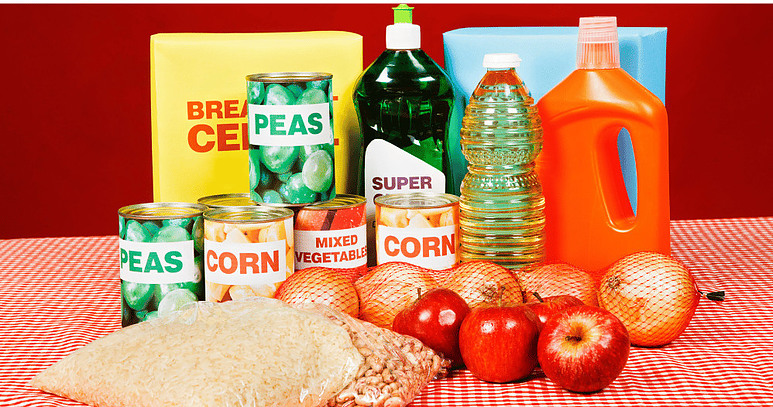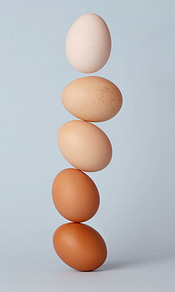
What to eat on a budget is a question that has become reality for many people recently! Prices have gone up – dramatically, in some cases. Most of us are not independently wealthy, and most of us don’t have a rich uncle that we expect to die soon, whom we are certain has put us in his will! No, most of us either work or are on a fixed income. We only have a certain amount of money, and that’s it.
Of course we could put it on the credit card, but that will have to be paid back with interest at some point, so…not a good idea. So it comes down to this: we need a budget. Food, unfortunately, can take up only a very small part of that budget. Everything else also needs to find a place – rent or mortgage, electricity, car insurance, taxes…lots!
Stay Within Your Budget and Stay Healthy
So let’s say you have $100 available. You need to eat – and eat healthily. What do you do? Here’s just a few guidelines that might help!
- Learn what products are the most affordable
- Beans. As mentioned in another post or two, there is virtually no one who could not afford beans – especially if bought in bulk. Even in cans, though, they are quite reasonable.
- Tortillas. If you live in the United States – and I assume any Latin American country – corn tortillas are unbelievably cheap, just a few cents per tortilla. They are whole-grain, too!

- Rice: Super-inexpensive, and very filling and satisfying.
- Eggs: It takes awhile to get through a couple dozen eggs, even if you eat
them every day for breakfast, and have an egg salad sandwich for lunch!
And what does a dozen eggs cost? A couple dollars? Not a bad deal! - Cheaper cuts of meat. We (my wife and myself) don’t buy much meat, but I do know there are considerable differences in price, and it doesn’t always reflect how tasty the meat is!
- Whole grains and seeds.
Check out the “bulk food” section of your supermarket, or your local
bulk food store, if you have one in your neighborhood. They have amazing varieties of grains and seeds! And then there’s whole grain bread as well – almost always a good deal. A lot of eating for just a few dollars! - Frozen fruits and vegetables. These are often a really good deal. Peas, corn, and mixed vegetables are often very inexpensive.
- Learn to appreciate foods that are less expensive. In the Bible, in the “Lord’s Prayer,” Jesus taught his disciples to pray “Give us this day our daily bread.” If our need is “bread,” when we get bread, we are happy! We don’t say, “Oh dear. All I have is bread. Please give me filet mignon!” The same thing applies to all kinds of other inexpensive foods as well. It’s a matter of making the psychological adjustment, so we’re happy with what we have.
- Buy generic brands. Sometimes there’s a discernible difference between the generic version of a product and the brand name – and sometimes not. We had a recent experience with buying “no name” cottage cheese. When we opened it, we noticed that it was discernibly more watery than the brand-name version. So a “strike-out” on that one. But “no name” can be considerably cheaper; it’s certainly worth a try.
- Don’t eat out. This should probably be a given, but you can’t assume anything, right? I have nothing against restaurants,
 they need to survive, too, but one visit to a restaurant can blow your entire grocery budget. If you work outside of your home, then pack a lunch, and make your own coffee! You’d be surprised how much you spend on coffee in the course of a year if you buy it at coffee shops. At $3-5 a “pop,” 5 days a week – what does that work out to per week or per month? Quite a bit! Again, nothing against coffee shops, they provide a useful service, but they’re not budget-friendly.
they need to survive, too, but one visit to a restaurant can blow your entire grocery budget. If you work outside of your home, then pack a lunch, and make your own coffee! You’d be surprised how much you spend on coffee in the course of a year if you buy it at coffee shops. At $3-5 a “pop,” 5 days a week – what does that work out to per week or per month? Quite a bit! Again, nothing against coffee shops, they provide a useful service, but they’re not budget-friendly. - Plan your meals, create a grocery list accordingly, and stick to it. Don’t just go to the store, and think, “Oh, I’ll just buy whatever looks good.” Not a good plan, if you want to stay within your budget! Shop the outside edges of the store first, that’s where the healthy value-for-dollars foods are located, as contrasted with the general “middle” of the store, where most of the processed foods are found.
- Make large-volume dishes, and eat leftovers. Less cooking (fits “very simple”), and more reheating in the microwave! It might keep you from being tempted to eat out. It’s a thought, anyway…
- Shop when you’re not hungry. Or don’t shop when you’re hungry. Whichever one works for you! You may avoid some impulse buying, just because your stomach won’t be growling.
- Don’t buy drinks. Water is free – or close to it. And healthier than sugared drinks, for sure. Tea and coffee are made from water, are super cheap, and are good for you!
- Buy in bulk. If it makes sense to buy something Costco-sized, and it won’t go bad – do it! Almonds, for example, at our local Costco are very inexpensive per pound if you buy the 1.36kg/3lb size; not so much so if you buy it in small bags in any non-warehouse store. With many products, if you’re concerned about them going rancid, put them in small bags and freeze them.
- Plan your eating according to “the sales.” If it works, and if it’s healthy. And if you like it! Don’t buy it just because it’s on
 sale if you won’t eat it.
sale if you won’t eat it. - Buy produce in-season. Again, if it works. It depends on where you live, of course! If you live in an area where various fruits and vegetables are grown, you might be able to get in-season produce very inexpensively. It’s a little less significant on the Great Plains where we live! Buy by the bag where it makes sense, not by the individual piece of fruit or vegetable. In most cases, it’s going to be less expensive.
Conclusion
So there’s a lot you can do! Start from ground zero and work up! “Ground zero” is, what would keep me from starving to death. That’s pretty easy to do with just about no money. Using “ground zero” as a starting point, build your menu from there. You might be able to survive on $20 per week, with extremely basic food. But you don’t have just $20, you have $100! Wow, think how you can add to “ground zero” with an extra $80! Hey…you need all the encouragement you can get when you’re on a budget!
So, good budgetary success! If you have any comments or questions about the topic of this post, please feel free to add them in the space below!
Very Simple and Healthy Recommended Product of the Day:
